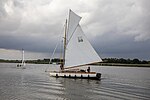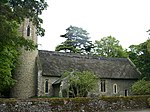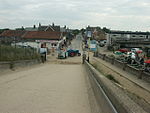Brograve Mill
1771 establishments in Great BritainGrade II listed buildings in NorfolkGrade II listed windmillsNorth NorfolkTower mills in the United Kingdom ... and 2 more
Windmills completed in 1771Windmills of the Norfolk Broads

Brograve Mill is a windpump located on Brograve level in the parish of Sea Palling within the Norfolk Broads National Park, United Kingdom. It can be found at grid reference TG448235 and is approximately 1 mile north of Horsey Mere. The mill is a Grade II listed building.
Excerpt from the Wikipedia article Brograve Mill (License: CC BY-SA 3.0, Authors, Images).Brograve Mill
Waxham Road, North Norfolk Sea Palling
Geographical coordinates (GPS) Address External links Nearby Places Show on map
Geographical coordinates (GPS)
| Latitude | Longitude |
|---|---|
| N 52.75361 ° | E 1.62621 ° |
Address
Brograve Drainage Mill
Waxham Road
NR12 0EA North Norfolk, Sea Palling
England, United Kingdom
Open on Google Maps










